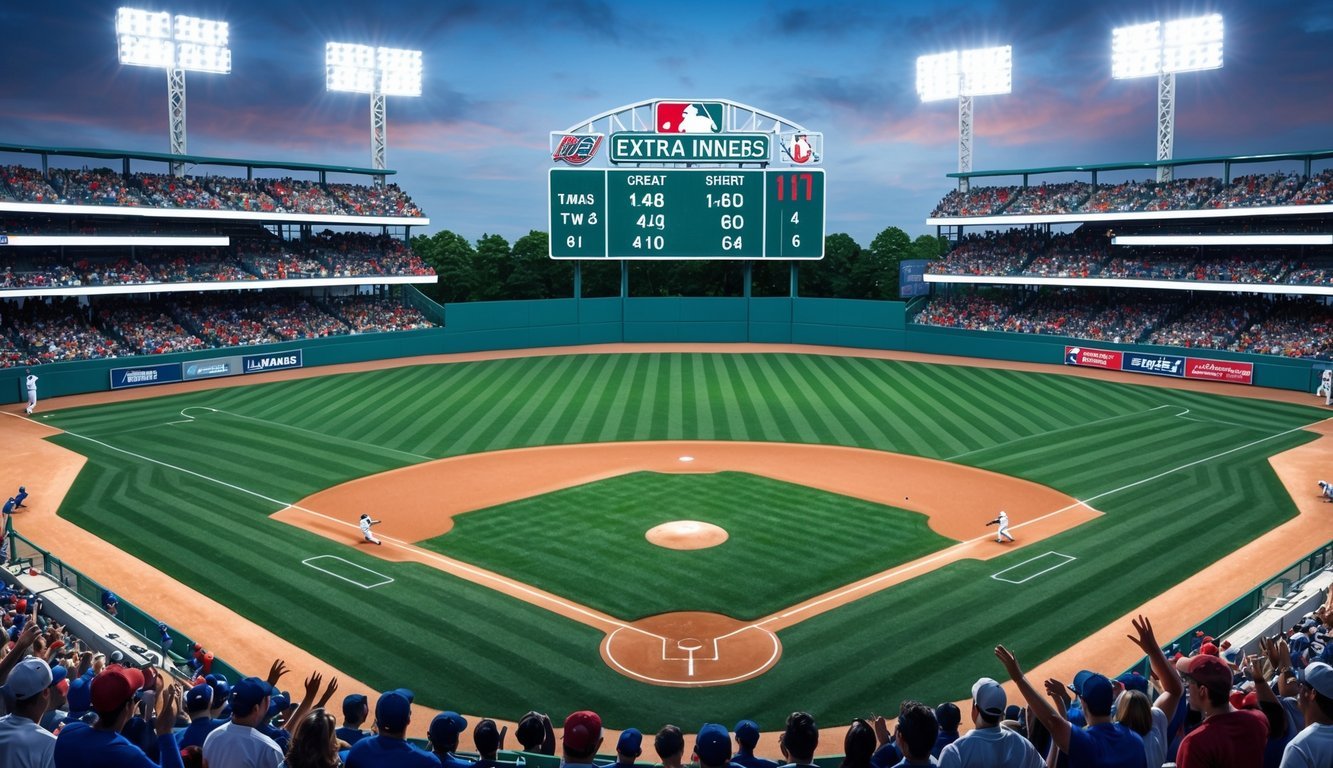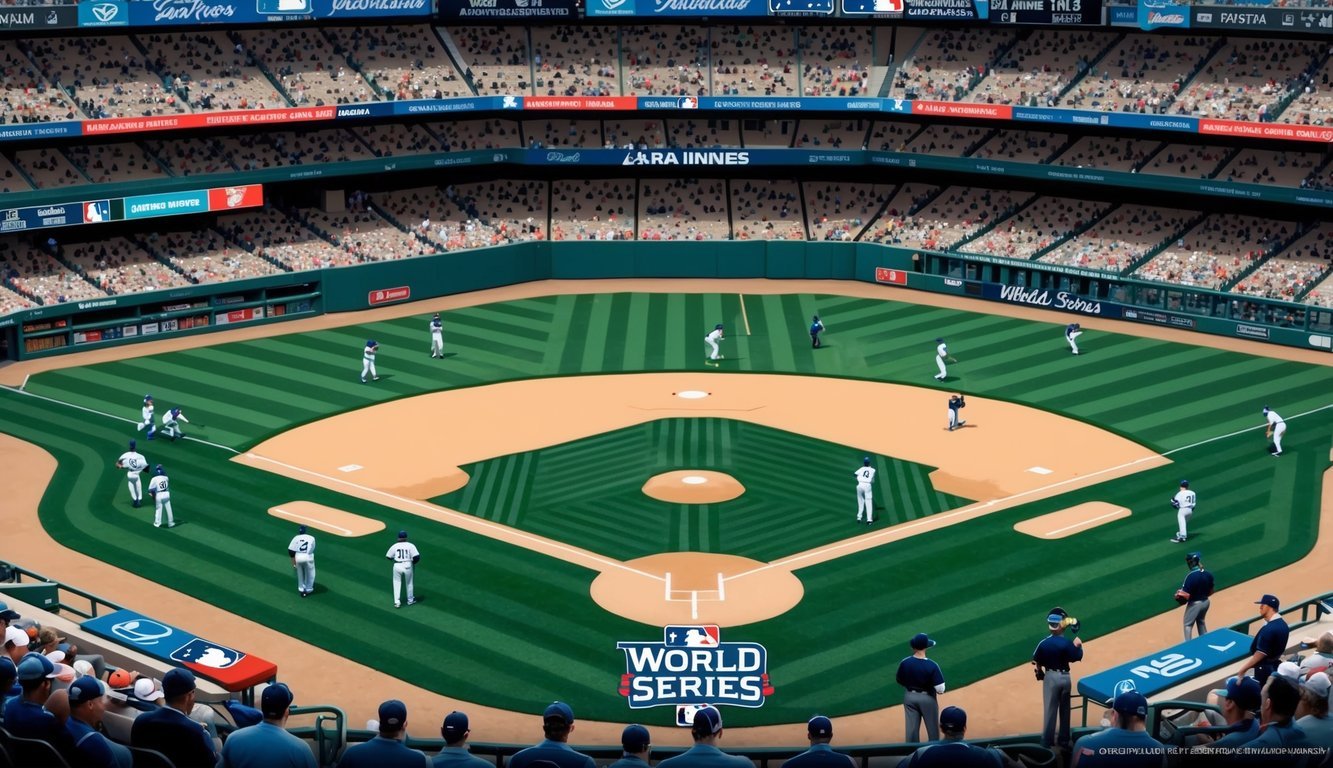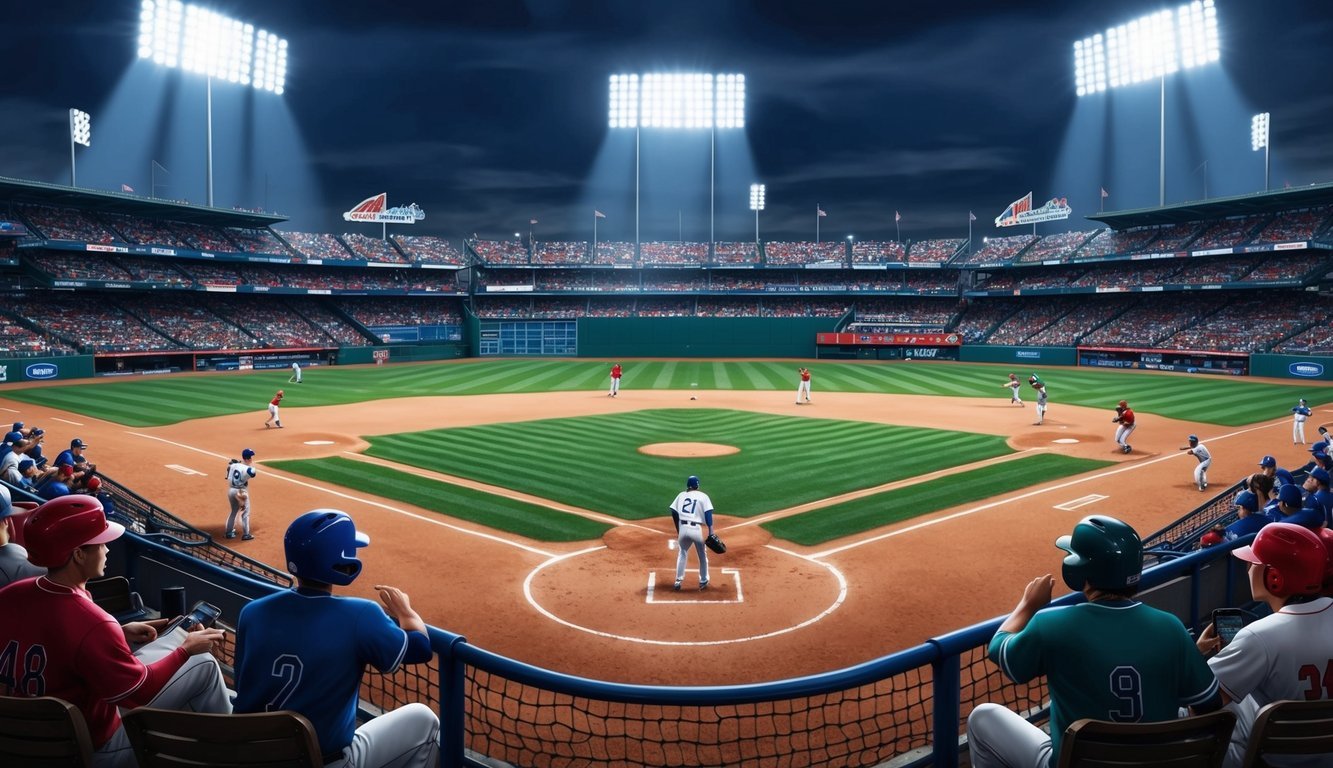As the World Series approaches, baseball fans eagerly anticipate the drama and excitement of potential extra-inning battles.
The thrill of these extended games has long been a hallmark of October baseball.
In the World Series, extra innings follow the same rules as the regular nine innings, with no “ghost runner” placed on second base to start each frame.
This differs from the regular season, where MLB implemented the automatic runner rule in 2020 during the COVID-19 pandemic.
The change aimed to shorten games and reduce player fatigue.
While this rule remains in effect for regular season contests, postseason games, including the World Series, maintain the traditional format.
MLB’s decision to keep extra innings unchanged for the World Series preserves the essence of playoff baseball.
Teams must rely on their pitching depth and offensive prowess to outlast their opponents in these high-stakes situations.
Fans can look forward to potentially witnessing unforgettable moments as the best teams in baseball compete for the championship in a format that honors the game’s rich history.
Basics of Extra Innings

Extra innings in baseball provide thrilling moments as teams battle to break ties.
The rules differ between regular season and postseason play, adding intrigue for fans.
Understanding Extra Innings
Extra innings kick in when teams are tied after 9 innings of play.
The game continues until one team has scored more runs than the other at the end of a complete inning.
Each team gets a chance to bat in the top and bottom half of extra innings.
In the regular season, MLB uses a “ghost runner” rule.
A runner starts on second base at the beginning of each half-inning.
This speeds up play and increases scoring chances.
While the ghost runner rule has its supporters, purists often debate its impact on the traditional nature of the game.
Additionally, teams keep a close eye on their “magic number explained in baseball,” which indicates how many wins they need to secure a playoff spot or eliminate a rival.
This adds another layer of strategy that can be influenced by the newfound urgency brought about by the ghost runner.
Pitchers face tough decisions in extra innings.
They must prevent the runner from scoring while dealing with fresh batters.
Managers often use pinch hitters and make defensive substitutions to gain an edge.
Difference Between Regular Season and Postseason Extra Innings
Regular season and postseason extra innings have key distinctions.
In the regular season, the ghost runner rule applies.
A runner starts on second base in each extra inning.
Postseason games, including the World Series, don’t use the ghost runner rule.
Teams play traditional extra innings without free baserunners.
This can lead to longer, more strategic games.
Pitching decisions become crucial in postseason extras.
Managers must balance using their best relievers with saving arms for potential future games.
Position players may need to pitch if a game goes very long.
The stakes are higher in postseason extras.
One run can end a team’s season or keep championship dreams alive.
This creates intense, unforgettable moments for players and fans alike.
Extra Innings Rule Changes
Major League Baseball has implemented significant changes to extra innings play in recent years.
These alterations aim to speed up games and add excitement for fans.
The Ghost Runner Rule
A runner now starts on second base at the beginning of each extra inning.
This “ghost runner” rule was first introduced during the COVID-19-shortened 2020 season.
It proved popular enough to become permanent in 2023.
The rule applies to both regular season and postseason games, including the World Series.
It creates immediate scoring opportunities and often leads to quicker resolutions in extra innings.
Approximately 10% of regular season games go beyond nine innings historically.
Teams must strategize differently with a runner in scoring position to start extras.
Bunting and aggressive baserunning become more common tactics.
The rule has largely accomplished its goal of shortening marathon games.
Pitch Clock and Shorter Games
MLB introduced a pitch clock in 2023 to further speed up play.
Pitchers have 15 seconds between pitches with bases empty and 20 seconds with runners on.
Batters must be ready in the box with 8 seconds left.
This change dramatically reduced game times across the league.
Extra inning contests now rarely stretch deep into the night.
The pitch clock remains active in extra innings, maintaining a brisk pace of play.
Shorter games benefit fans in the stands and watching at home.
Players also appreciate quicker resolution to tied games.
The combination of the ghost runner and pitch clock has transformed how extra innings unfold in MLB.
Game Strategies in Extra Innings
In World Series extra innings, teams employ specific tactics to secure victory.
These approaches focus on maximizing offensive opportunities and managing pitching resources effectively.
Offensive Strategies
Teams prioritize advancing runners into scoring position during extra frames.
Managers often call for sacrifice bunts to move the leadoff runner to second base.
This increases the chances of scoring on a single hit.
Aggressive baserunning becomes crucial, with players more likely to attempt steals or take extra bases on hits.
Batters adjust their approach, focusing on making contact rather than swinging for the fences.
However, a well-timed home run can be a game-changer in extra innings.
Pinch hitters and pinch runners are frequently used to gain tactical advantages in crucial moments.
Pitching Staff Management
Extra innings put immense pressure on pitching staffs.
Managers must balance the need for effective pitching with the risk of depleting their bullpen for future games.
Closers and setup men may be asked to throw multiple innings, stretching beyond their usual roles.
Long relievers become invaluable assets, capable of eating up several innings if the game extends deep into the night.
Managers must also consider potential injuries and fatigue when making pitching decisions.
In elimination games, starting pitchers might even be called upon for relief duty.
Teams with deeper bullpens often have an advantage in prolonged extra-inning battles.
Careful management of pitch counts and rest days becomes crucial as the series progresses.
Historical Context of Extra Innings

Extra innings have been a thrilling part of baseball since the sport’s early days.
These extended battles have produced some of the most memorable moments in World Series history and shaped how the game is played today.
Famous Extra Innings Games
The 1916 World Series saw the longest game ever, lasting 14 innings.
The Boston Red Sox defeated the Brooklyn Robins 2-1 in a pitcher’s duel that lasted 2 hours and 32 minutes.
In 1991, the Minnesota Twins and Atlanta Braves played three extra-inning games in a single World Series, a record that still stands.
The 2018 World Series featured an 18-inning marathon between the Los Angeles Dodgers and Boston Red Sox.
This game lasted 7 hours and 20 minutes, becoming the longest World Series game by time.
Max Muncy’s walk-off home run in the bottom of the 18th inning gave the Dodgers a hard-fought victory.
Impact of the Ghost Runner Rule
Major League Baseball introduced the “ghost runner” rule in 2020 to speed up extra-inning games.
This rule places a runner on second base to start each extra inning.
While it’s used in regular-season games, the World Series and other playoff games don’t use this rule.
The ghost runner has significantly reduced the number of marathon games in the regular season.
It’s changed strategies for both offense and defense in extra innings.
Some baseball fans love the excitement it brings, while others feel it takes away from the game’s traditions.
College baseball has its own version of this rule, placing runners on first and second base in extra innings.
This has led to quicker resolutions in tied games, preventing excessive strain on pitching staffs.
Extra Innings in Baseball Culture

Extra innings are a beloved part of baseball tradition, adding excitement and unpredictability to games.
They create memorable moments for fans and players alike, while testing the endurance and strategy of teams across different leagues.
Fan Experience During Extra Innings
Baseball fans often view extra innings as free baseball, relishing the bonus action.
The atmosphere in stadiums intensifies as each pitch becomes crucial.
Spectators engage in superstitious rituals, hoping to influence the outcome.
Some fans leave early due to time constraints, while die-hards stay until the final out.
Extra innings can lead to unique experiences.
Fans might witness rare plays or unexpected heroes emerging.
Late-night games sometimes result in quirky promotions or giveaways.
The longer a game goes, the more likely fans are to form bonds with fellow spectators, sharing snacks or swapping stories.
Extra Innings Across Different Leagues
MLB’s postseason features traditional extra innings.
The regular season’s ghost runner rule is not used, so this creates a pure, strategic battle that can last deep into the night.
The World Baseball Classic uses a modified system.
From the 11th inning onward, runners are placed on first and second.
Minor leagues often experiment with extra inning rules.
Some leagues use tie-breakers similar to soccer penalty shootouts.
College baseball has its own variations.
The NCAA uses a runner on second base starting in the 11th inning during regular season games.
Japanese baseball employs a unique system.
Games can end in a tie after 12 innings, preserving pitching arms and respecting fans’ schedules.
This approach balances competitive spirit with practical considerations.
